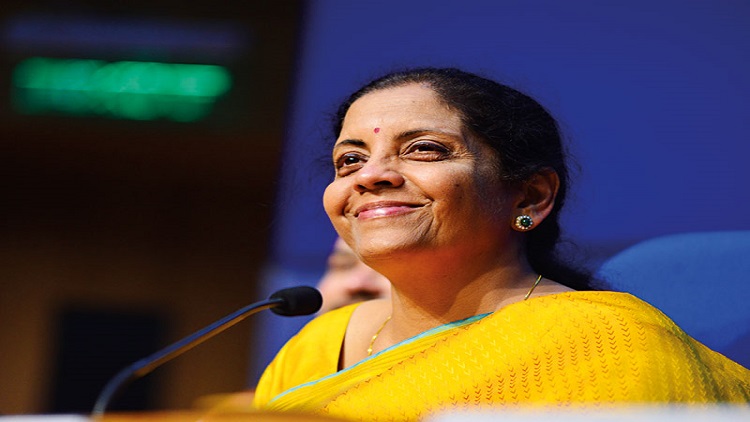

Sushma Ramachandran
The budget proposals for 2020-21 are being presented in the backdrop of a pandemic that has shaken the entire world. The Indian economy has been no exception. The task of the Finance Minister Nirmala Sitharaman is now to revive growth by boosting demand and providing incentives for investments and savings. She also has to focus on certain elements of the economy that have been battered by the pandemic such as small and medium enterprises. Unemployment is at an all-time high and therefore it is imperative to ensure that industrial and commercial operations get back to normal and the services sector is given support to resume business as usual.
It is equally important for the Finance minister to consider the needs of those at the bottom of the pyramid. In the several rounds of revival measures announced last year, the focus was largely on the monetary side with credit flows sought to be given a boost. While those measures have clearly had an impact and there are signs of the economy heading towards a V shaped recovery, what is also needed is a more direct approach to stimulate demand. This can be done by making direct cash transfers to the accounts of the poorest and worst affected by the pandemic. Such step becomes even more essential in the light of the latest Oxfam report that highlights growing global inequities as a result of the pandemic.
The report said the wealth of Indian billionaires increased by 35 per cent during the lockdown. In contrast 12.2 crore people lost jobs, of which 75 per cent were in the informal sector. In this scenario, it is clear that direct benefit transfers are needed immediately as a way of providing support to the most vulnerable group including those who have fallen out of the jobs market owing to the pandemic.
The second area that needs greater attention is small and medium business. The package unveiled last year for this sector was simply not enough to rescue companies struggling from loss of income and having to cut the workforce to resume even curtailed operations. The economic revival now being witnessed appears to be an impetus from companies in the large sector. These had the resources to bear the stresses of the lockdown and restrictions due to the pandemic, unlike smaller entities. The services segment especially the hospitality sector including hotels and small restaurants also continues to be badly hit. This sector encompasses millions of small enterprises with a vast number of formal and informal workers. The entire small and medium business segment is estimated to employ 110 million workers but many have either closed down or reduced their work force. This is one of the reasons that the CMIE (Centre for Monitoring Indian Economy) data is showing job losses at an all –time high in recent months despite the apparent economic recovery.
The package of measures for this sector announced last year was largely in terms of providing fresh credit to units which had taken loans. Small industry associations complained they continued to face bureaucratic hurdles in availing of the new facility while those in the tiny and micro segment had been left out altogether. Clearly a more effective set of measures needs to be formulated for a segment that contributes as much as 30 per cent of the country’s GDP.
The third area that must be given special focus is healthcare. The need to ensure better healthcare amenities for all has come to the fore during pandemic. It is now abundantly clear that the health of the economy is linked to the health of the general public. For instance, it is now accepted that if the country is able to achieve widespread vaccination and thereby immunity from the virus, it will revive without the need for any more stimulus measures. This process, however, may take from six months to a year.
Health should be top priority
Meanwhile, the pandemic has exposed the shortfall in the country’s healthcare infrastructure. Even in the big metros, it became difficult to find beds during the peak of the crisis. Luckily the COVID virus did not penetrate too far into rural areas as the state of the primary health care system in these areas is abysmal. This is despite the fact that India has a thriving pharmaceuticals industry and is even a major drugs exporter. The lack of infrastructure is largely due to the low spending on health which is only about 1.5 per cent of GDP as against 5 per cent for China and 7 to 8 per cent for European countries. The outlay on health not only has to be stepped up sharply but the focus needs to be on improving basic facilities in small towns and rural areas.
The fourth area that needs special attention is education. Here too spending as a percentage of GDP is only around 2.8 per cent. This is another area where many lacunae have been exposed during the pandemic.
The need for online learning has revealed that most children here do not have digital education facilities. In other words, India may be touted as a software superpower, but the majority of schoolchildren do not have access to mobile phones, televisions or laptops to help them through the learning process. The reliance on mid-day meals as a source of nutrition has also emerged starkly as many states found closing schools was affecting the health of children.
The 2021-22 budget thus needs to become as the Finance Minister has described, like no other in the past. Revenue shortfalls are bound to be there and the fiscal deficit is bound to widen but there needs to be a focus on ensuring that the immediate crisis facing millions in the country is given an adequate response. Thus, it is time to be more generous for those at the bottom of the pyramid by utilizing the excellent direct benefits transfer system that has been put in place. In addition, small enterprises need to be given better support to weather short term problems. And finally, unless more spending is done to build up health and education infrastructure right now, the country may pay for it in the long run.
